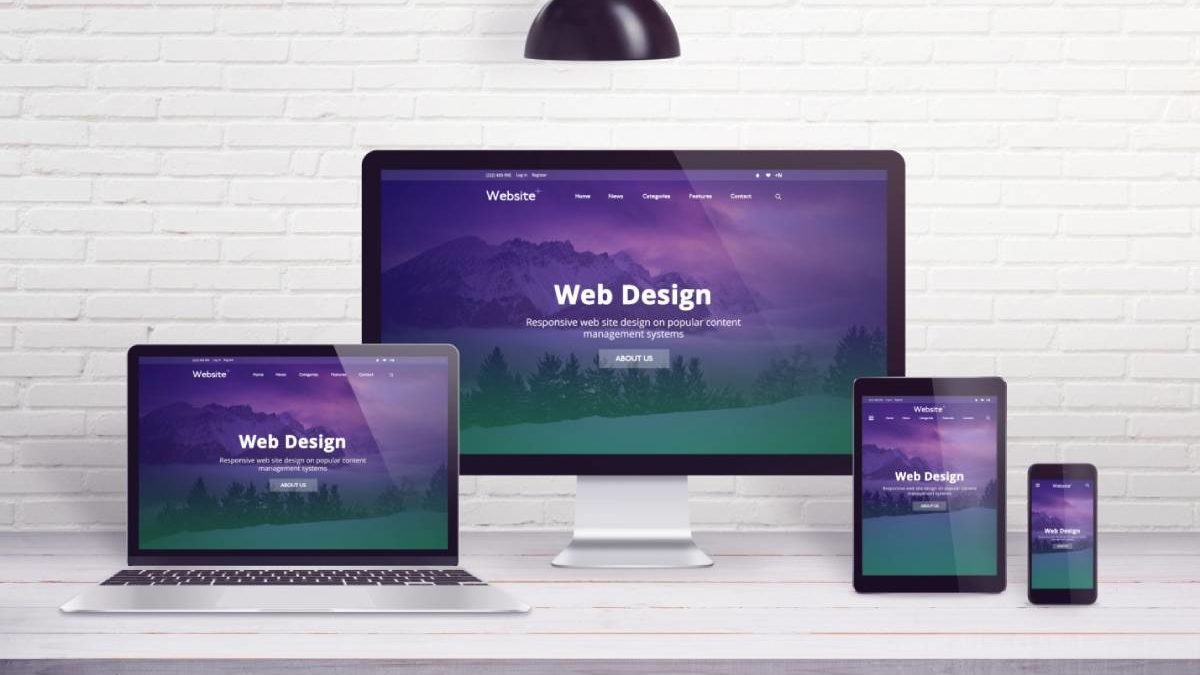In today's digital landscape, the significance of web design for businesses cannot be overstated. With consumers increasingly turning to the internet for purchasing, information, and assistance, a well-designed webpage has become crucial for attracting and keeping customers. A strong web site not only showcases a brand’s identity but also acts as a key touchpoint where initial perceptions are formed. A user-friendly interface, visually appealing visuals, and efficient navigation are just a handful of elements that can improve the overall experience, ultimately influencing customer decisions.
Investing in high-quality web design is not just an artistic choice; it immediately impacts a business's bottom line. Research consistently indicate that users are apt to trust and engage with beautifully designed websites. In a competitive market, a strong online presence can differentiate a business from its competitors, leading to higher traffic, greater conversion rates, and better customer loyalty. As such, understanding the intricate connection between web design and financial performance is vital for any business hoping to thrive in the digital age.
Why First Impressions Matter First Impressions
In the digital landscape, a site often serves as the first point of interaction between a brand and potential customers. This initial engagement can greatly shape impressions and affect customers’ decisions. An attractive and well-crafted web design grabs users' attention, conveys professionalism, and creates trust from the instant they visit the page.
A striking website layout plays a crucial role in retaining visitors. If users find a site that is cluttered, not up to date, or lagging to load, they are likely to leave in search of a more enjoyable experience. Good web design not only lures users but also holds them engaged, inviting exploration of products or services offered. Effective design features, concise navigation, and user-friendly layouts enable a good user journey, helping visitors to find the information they require.
Moreover, a strong first impression can lead to better conversion rates. When a website reflects the brand's essence through harmonious graphics and a well-thought-out structure, it can boost the overall customer experience. This bond fosters loyalty and boosts the likelihood of return business. Investing in high-quality web design is, therefore, not just an aesthetic choice; it is a strategic decision that can propel revenue and growth for a brand.
Value from Quality Design

Investing in exceptional web design may greatly improve a business's return on investment. A professionally designed and appealing website not just attracts visitors as well transforms them into customers. Evidence have shown that users frequently evaluate a company's credibility based on its website design. Therefore, a well-crafted site has the potential to lead to enhanced trust and, ultimately, increased sales figures.
Furthermore, quality web design enhances user experience, something that is crucial in the current competitive market. When users consider a website easy to navigate and visually appealing, they are greater than average in their tendency to stay longer and interact with the content. This superior user engagement often results in lower bounce rates and increased conversion rates, indicating that businesses obtain more value from the equivalent amount of traffic. Committing to web design is, thus, a planned move that may translate into concrete financial benefits.
Finally, effective web design likewise plays a significant role in SEO. A well-designed site that has fast load times and is mobile-friendly may boost a business's visibility in search results. Better rankings lead to increased visibility, that captures more potential customers. In this way, the financial impact of a well-planned design spans beyond immediate sales, adding to long-term growth and sustainability for the business.
Trends in Online Design That Increase Sales
In the challenging online marketplace, web design trends are regularly evolving to boost user experience and drive conversions. One significant development is the use of responsive design, which ensures that websites respond seamlessly to various screen sizes and devices. With an increasing number of consumers browsing on mobile devices, having a mobile-friendly site is no longer a luxury. A responsive design not only enhances user experience but also positively impacts search engine rankings, leading to greater visibility and increased traffic.
Another trend that significantly increases conversions is the integration of minimalism. By simplifying layouts and focusing on essential elements, businesses can decrease clutter and make it easier for visitors to explore their sites. This method allows users to quickly locate information and makes calls to action more noticeable. As a result, sites that embrace minimalism often see enhanced engagement rates and higher conversion percentages, as users are less distracted and more likely to carry out desired actions.
Lastly, incorporating tailored user experiences through the use of data is becoming increasingly popular in web design. By analyzing user behavior and preferences, businesses can customize content and recommendations to unique visitors. Features such as responsive content and personalized product suggestions can be powerful tools in guiding users through the purchasing journey. This customization not only enhances user satisfaction but also significantly increases the likelihood of conversions, as visitors feel more recognized and attended to by the brand.
